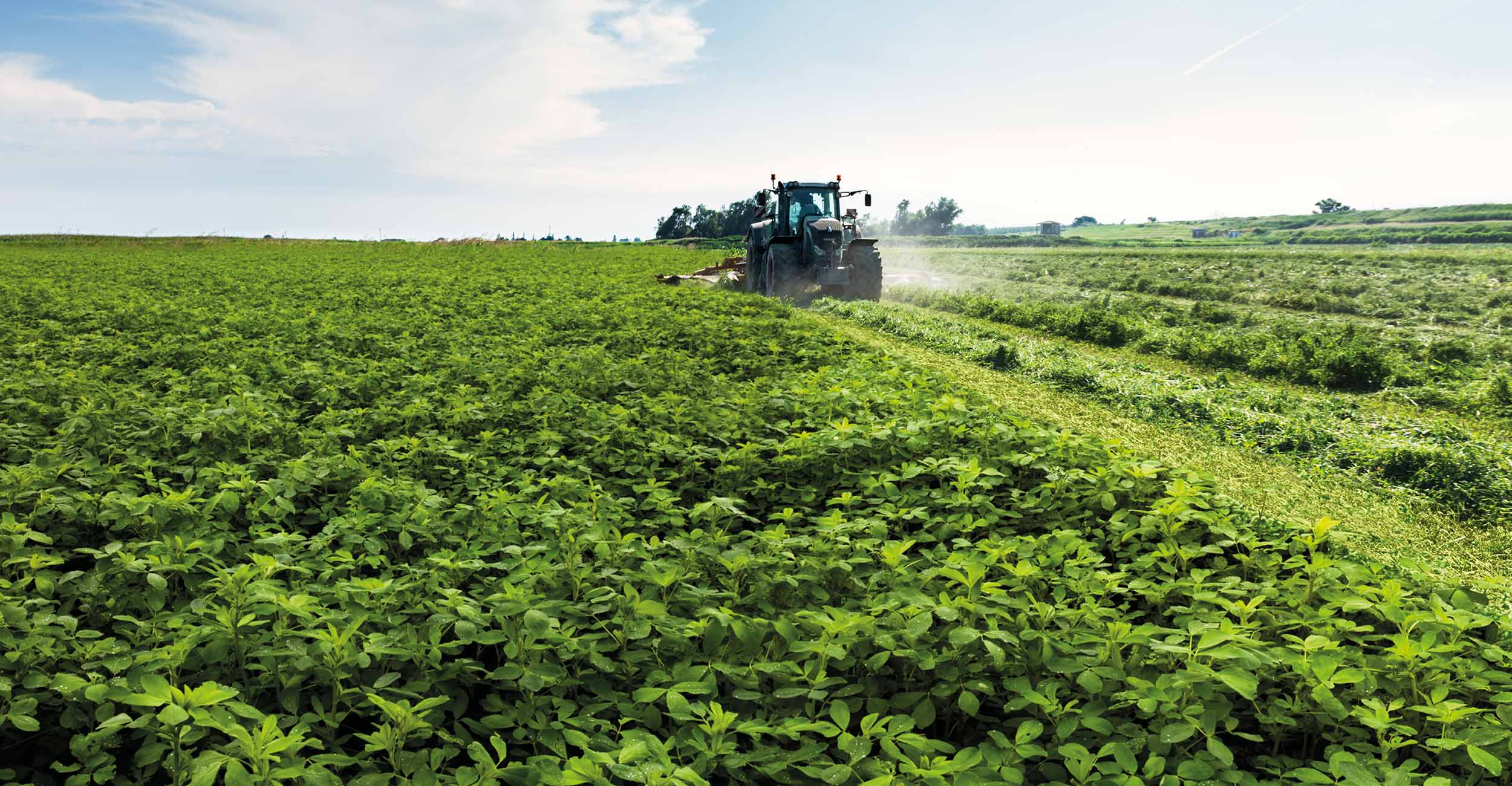Growing alfalfa is an agricultural practice that blends tradition and innovation and is central to sustainable and productive agriculture.
This extensive guide will explore all crucial aspects of cultivation, from planting to harvesting, highlighting the environmental benefits and economic potential of this crop.
How much does one hectare of Alfalfa yield?
Let's begin discussing yield; a well-managed alfalfa hectare can produce significant amounts of forage, which is crucial for livestock feeding. Yields can vary depending on several factors such as soil quality, management practices, and weather conditions. Nevertheless, with proper techniques, farmers can expect high yields per growing cycle.
Yield optimization
To maximize yield, effective soil and water management strategies are vital. Using drought-resistant alfalfa varieties can help maintain production even in adverse weather conditions. Furthermore, crop rotation and proper nutrient management are critical to maintain soil fertility and prevent diseases and pests.
What fertilizer do you use for Alfalfa?
Alfalfa growing requires a careful fertilization strategy. Being a legume, alfalfa can fix atmospheric nitrogen, reducing the need for nitrogen fertilizers. Still, other nutrients such as phosphorus and potassium are critical to ensure healthy growth and abundant yields.
Targeted fertilization for optimal growth
A balanced fertilization, based on soil test results, can promote vigorous growth, and improve crop quality. Furthermore, organic manure or compost can enrich the soil with organic matter, improving soil structure and nutrient supply.
Planning sowing
Sowing alfalfa is a process that requires careful planning and precision. The choice of when to sow alfalfa depends on several factors, including local climate and the growth cycle of the strain chosen. Typically, sowing takes place in spring or late summer when soil temperatures are ideal for germination.
Strategies for successful sowing
For successful alfalfa sowing on a given hectare, it is crucial to properly prepare the seedbed, ensuring that it is free of weeds and that the soil is well tilled.
Using high-quality alfalfa seed can make all the difference in terms of germination and plant growth.
From field to forage: The result of alfalfa cultivation
The classic final stage of alfalfa growing is forage production. This process requires timely harvesting, when the plant has reached its nutritional peak, followed by proper drying.
Alfalfa hay resulting from proper production is a valuable feed for livestock thanks to its protein content and other essential nutrients.
Storage and use of Alfalfa hay
Once harvested, hay should be stored in a dry place to preserve its quality. Specifically, you can check production through the Forte Method, which ensures maximum nutritional yield of dehydrated alfalfa for animal feed.
A sustainable future thanks to Alfalfa
In the modern agricultural panorama, alfalfa growing offers a breakthrough in balancing productivity and sustainability.
This plant, in fact, is not only a staple in the diet of many farm animals, but also plays an active role in improving soil quality, conserving water, and protecting biodiversity.
Committing to alfalfa growing means investing in an agricultural cycle that rewards harmony with the ecosystem.
The plant's deep roots improve soil structure, preventing erosion and increasing its water retention capacity, a non-negligible benefit in times of increasing drought due to climate change. Moreover, its ability to fix nitrogen enriches the soil, reducing the need for artificial fertilizers and promoting a healthier environment and a greener future.
A helping hand that extends beyond environmental sustainability
Yet alfalfa's contribution goes beyond environmental sustainability. In an era where resources are precious, its growing proves to be cost-effective for farmers. With an ever-increasing demand for high-quality forage, especially in industries such as dairy and beef farming, alfalfa stands as a renewable and profitable resource.
Its resistance to climatic variations and ability to adapt to different soil types make it a reliable choice even in small agricultural settings.
It is not just about sowing a field but harvesting a vision. Every alfalfa seed planted is a step toward earth-friendly agriculture that provides sustenance and looks to the future with optimism. It is a commitment to a practice that celebrates life, from the single plant to the entire ecosystem.
In this regard, innovation plays a key role. New research and technologies continuously surface, offering state-of-the-art methods to monitor crop health, optimize water use, and tackle pests and diseases in an eco-friendly manner. These advances not only make farmers' lives easier but elevate the entire industry, pushing for higher standards of quality and care.
Ultimately, then, as alfalfa fields sway under the sun, they stand for something greater than just themselves: they symbolize a promise, a pledge to the future. A future in which agriculture and nature do not clash, but work together in symbiosis, building a world in which green is not just a color, but also a way of living.
